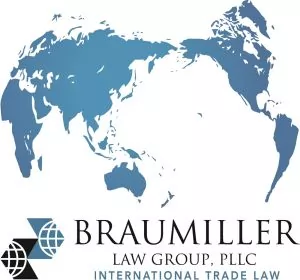- within Energy and Natural Resources, Technology and Strategy topic(s)
- with readers working within the Retail & Leisure industries
Whether you move goods via trucks, trains, planes, or cargo ships, it is essential that you begin to view the shipment of goods in terms of security for the entire journey. Cross-border shipping is on the rise according to Customs and Border Protection (CBP), and adjustments at border bridges are being managed as fast as they can be approved. Being a CTPAT (Customs Trade Partnership Against Terrorism) certificated participant is in large part an advantage to keeping cargo moving smoothly through the ports of entry, in particular along the Southern border.
Mexico was reported to be the United States' second-largest goods trading partner, with $538.1 billion in total (two-way) commodities traded in the past year, surpassed only by China, according to the U.S. Census Bureau. Records indicated that in 2020, 2.3 million trucks and 239,017 rail containers crossed the border at the Laredo port of entry. The World Trade Bridge, pictured above, is one of two commercial bridges in the Laredo System. It is estimated that this entry point averages approximately 10,000 commercial trucks per day and the number is increasing steadily as we globally emerge from the COVID-19 pandemic. CBP officers report daily seizures of narcotics, which, in and of itself, is cause for delay in the border clearance process. If the importer is CTPAT certified and uses a FAST, (Free and Secure Trade) qualified carrier, the vehicle can be processed thru the FAST lane. Having this access may avoid lengthy wait times and holdups due to the increasing enforcement activities. The World Trade Bridge complex at Laredo is currently making improvements to the crossing that includes adding four new FAST lanes which are scheduled for completion by the end of 2021.
It is because of the noted significance of the movements at the Southern border, the volume numbers and the valuation of goods that CBP began a focused effort to decrease the time it takes to process entering cargo. Moving shipments swiftly and efficiently thru these ports without compromising security effectiveness became a primary goal of Customs considerations.
To that end CBP is engaging with industry technology developers and Mexico Customs to implement more effective ways to process cargo. CTPAT members are first in line for the benefits of these programs. Highlighting a couple that have taken center stage will underscore the reasons for participation in the CTPAT program.
- Unified Cargo Processing (UCP) that was piloted in 2017-2018 is moving forward in wide operations across the Southern border. This program is a cooperative, non-intrusive, image sharing platform that is monitored by CBP and Mexico Customs together for the detection and prohibition of cross-border illicit activities. There are a number of advantages here for the CTPAT participants.
- There is a dedicated lane, so that cargo transiting the border at Laredo never has to stop in Mexico.
- Clearances and Inspections are performed in CBP cargo lots on the U.S. side of the border.
- IF selected for secondary inspection, front of the line privileges are executed, even if other cargo is scheduled prior to yours. This potentially limits the fees charged for various activities associated to these inspections and allows the freight to be released more expeditiously.
- Non-Intrusive Inspection, (NII) technology implementation is currently on-going with a variety of inspection models. This is where the CTPAT member has a clear advantage.
- VICAS Exams – are x-rays used for full container imaging. At the ports, these machines are portable and mounted on a truck. The vehicle can slowly drive the length of the container and make a good determination of contents without opening or breaking a security seal.
- Viken Detection's HBI-120 handheld devices. CBP says, "It's a game changer." Viken's publicity regarding this device boasts, "It comes equipped with a flashlight for those dark places, and a built-in video camera to supply review imaging. It is able to scan a square foot per second, (30 by 30 cm) and see high-contrast backscatter x-ray images of concealed contraband".
- Viken's CEO Jim Ryan mentioned that drug traffickers often try to counter the x-ray scanners by wrapping the carrying compartments in lead. To disrupt this practice the engineers added a feature that is able to show the presence of lead! This feature alerts the officer to "dig deeper" with a physical inspection of the area.
- Additional scanning technology named Osprey-UVX is embedded on the ground. This technology is still developing but will operate as a vehicle drives over the system. It is able to x-ray the contents of the under carriage with real-time imaging that takes about a minute.
CBP agents performed approximately 6 million NII scans in FY20 that directly led to the seizure of 216,203 pounds of drugs, $3 million in undeclared currency, 1,655 guns and over 4,500 unauthorized migrants being transported illegally in cargo trucks since October of 2020. The U.S. Department of Homeland Security is working diligently to find effective, non-intrusive ways to search containers and trucks crossing into the U.S. CBP cargo lots at the southern border are extremely busy, but you do not often find CTPAT qualified entities represented in the intense inspection procedure. It is definitely worth the time to be a part of this program if you are regularly transiting goods at U.S. land border crossings.
Check out our new Digital Magazine Get the inside scoop on the Braumiller Law Group & Braumiller Consulting Group "peeps." Expertise in International Trade Compliance.
The content of this article is intended to provide a general guide to the subject matter. Specialist advice should be sought about your specific circumstances.


